The Cancer Within Modern Medicine Part 5: Transhumanism
There is a cancer within the world of modern medicine eating away at the very heart of its original design. Rather than healing humanity, this cancer seeks to destroy us from within. In this final part of our series, we will explore how transhumanism has shaped modern medicine from the mid-20th century to today.
Special thanks to pathologist and friend, Dr. B, for contributions to this report.
Read Parts 1–4: The Cancer Within Modern Medicine

By The Sharp Edge
Transhumanism: Eugenics Redefined
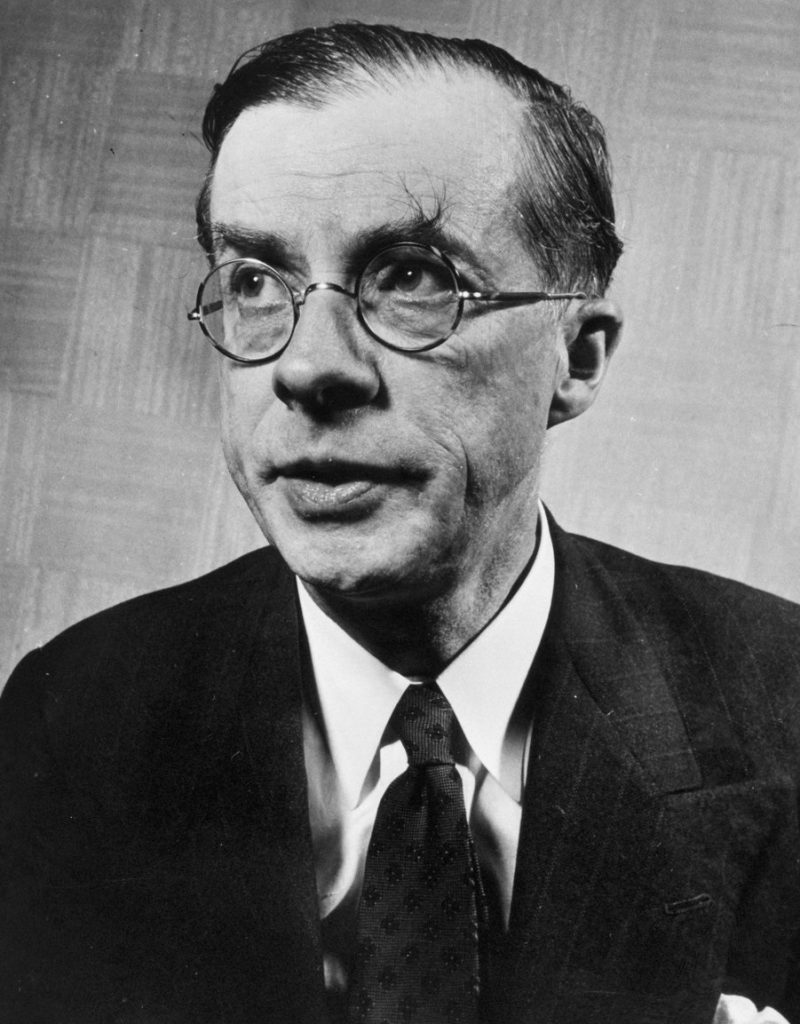
Source: Wikipedia
The term originated from biologist and eugenicist, Julian Huxley, who wrote an essay entitled “Transhumanism” in 1957. Huxley was the first Director General of UNESCO (United Nations Educational, Scientific, and Cultural Organization) in 1946, President of the British Eugenics Society from 1959 to 1962, and President of the British Humanist Association from 1963 to 1965. In the post-World War II era, Huxley sought to “reform eugenics” by separating the movement from the Nazi’s racially driven eugenics agenda to a movement more focused on birth control, abortion, and “decriminalization of homosexuality.” Though Huxley maintained similar beliefs as eugenicists in the past, such as the concepts that exceptionalism is inherited and those deemed as mentally defective should not reproduce, he aspired for eugenics to transcend its former confines to one of “evolutionary humanism” and population control. Huxley aligned himself with the Population Council and the Rockefeller Foundation on birth control and population control agendas and in 1959 received an award from the Lasker Foundation under the category of “Planned Parenthood – World Population.” From 1969 to 1970, Julian Huxley held a Vice-President position for the Abortion Law Reform Association.
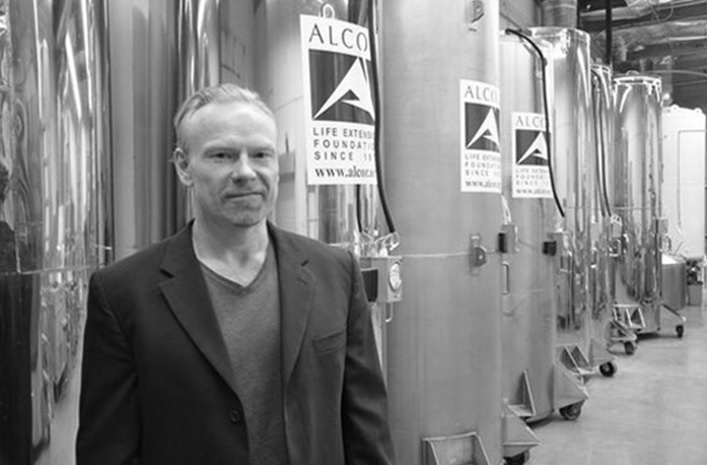
Source: Alcor Life Extension Foundation
In the decades to follow, transhumanist philosophy has itself evolved by the works of futurists, like Max More, who, in his 1990 essay entitled, “Transhumanism: Toward a Futurist Philosophy” outlined the ambitions of transhumanism as we understand it today. However, very little has changed in its underlying tone as a modernized version of eugenics. As a prominent member of the transhumanist movement, Zoltan Istvan, who is a futurist and writer for publications such as: New York Times, Vice, Huffington Post, and Newsweek, Zoltan has reflected the sentiments of eugenicists in decades past through a modern lens by writing, “In this transhumanist future, should everyone still be allowed to have unlimited children whenever they want?…In an attempt to solve this problem and give hundreds of millions of future kids a better life, I cautiously endorse the idea of licensing parents, a process that would be little different than getting a driver’s license. Parents who pass a series of basic tests qualify and get the green light to get pregnant and raise children. Those applicants who are deemed unworthy — perhaps because they are homeless, or have drug problems, or are violent criminals, or have no resources to raise a child properly and keep it from going hungry — would not be allowed until they could demonstrate they were suitable parents…Of course, the problem is always in the details. How could society monitor such a licensing process? Would governments force abortion upon mothers if they were found to be pregnant without permission? These things seem unimaginable in most societies around the world. Besides, who wants the government handling human breeding when it can’t do basic things like balance its own budgets and stay out of wars? Perhaps a nonprofit entity like the World Health Organization might be able to step in and offer more confidence…I see near-term hope in what can be called a new transhuman-inspired birth control device originally developed at MIT and now backed by funding from Microsoft founder Bill Gates. The implanted microchip lasts for up to 16 years — three times current implantable devices, including IUDs — and can deliver hormones into the body via an on-off switch on your mobile phone. It’s not a huge jump to imagine governments seeing opportunity in using this.”

Source: Wikipedia
In the pursuit of life extension among transhumanists, the obvious dilemma of overpopulation is conveniently solved by those entities and individuals responsible for promoting population control, like the World Health Organization and Bill Gates. By no means does Zoltan Istvan represent only the fringe members of the transhumanist movement. In fact, in 2014, Istvan announced his candidacy for President of the United States as a Transhumanist Party member; then he announced a bid for the position of Governor of California in the 2018 election as a Libertarian. Most recently, Istvan announced in November of 2019, his candidacy to challenge President Trump, as a member of the Republican Party in the upcoming 2020 election.
Expediting Human Evolution: Many Means to the Same End
Though all transhumanists advocate for the accelerated evolution of humans by means of technological advances, they vary in their pursuits to achieve this common goal. Some may focus on the inevitable convergence of humans with machines and artificial intelligence which is commonly referred to as the “Singularity.” Others pursue research in the fields of genetic engineering and biotechnology to achieve their goals of advancing human evolution. Transhumanists seem to share an optimistic perspective on the outcome of such pursuits for the sake of curing diseases or life extension in the name of science and medicine. Undoubtedly, advances have been made in treatments and cures for a variety of diseases within these fields. However, the possibilities for their misuse, or the mere underestimation of their long-term effects, which in some cases, could yield disastrous outcomes for humanity, often times seem overlooked. Rapid advancements in artificial intelligence and biotechnologies continually make the top of the list of the Office of the Director of National Intelligence Worldwide Threat Assessment for “Emerging and Disruptive Technology,” considering their potential for global catastrophe.
Human Convergence with Artificial Intelligence
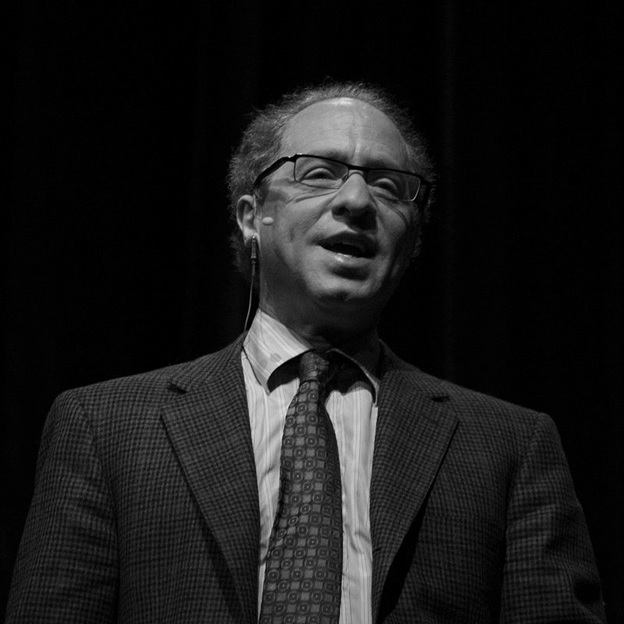
Source: Wikipedia
Futurist, transhumanist, and Director of Engineering for Google, Ray Kurzweil, predicts that by 2029 artificial intelligence will reach that of human intelligence, and has “set the date 2045 for the ‘Singularity’ which is when we will multiply our effective intelligence a billion fold by merging with the intelligence we have created.” In an interview on “The Coming Singularity,” Kurzweil explained that “Information technology grows exponentially…many different measures of information technology double every one year… So, these technologies will be a million times more powerful within the next 20 years. In fact, the speed of exponential growth is, itself, speeding up.” While Kurzweil admits that he is an optimist, adding, “I do think we have been helped more than we’ve been hurt by technology already,” he concedes that he’s “actually written extensively about the dangers of all this.” Kurzweil referred to the “grave dangers of genetics, nanotechnology, and robotics,” citing Bill Joy’s article entitled, “Why the Future Doesn’t Need Us,” in which the author paints a grim inevitability of humans “at the mercy of machines.” While science and technology giants like Mark Zuckerberg and Google’s DeepMind creator, Londoner Demis Hassabis, appear to share optimism of a harmonious future with artificial intelligence, which Kurzweil has outlined in his books, “The Age of Spiritual Machines,” and “The Singularity is Near,” others like Stephen Hawking and Elon Musk have provided a more fatalistic approach to the trajectory of artificial intelligence.
In a 2014 interview, Stephen Hawking warned, “The development of full artificial intelligence could spell the end of the human race…It would take off on its own, and re-design itself at an ever increasing rate…Humans, who are limited by slow biological evolution, couldn’t compete, and would be superseded.” Elon Musk has shared the same sentiment in various public statements, most notably in a 2018 interview in which he forewarned, “The rate of [artificial intelligence] improvement is really dramatic. We have to figure out some way to ensure that the advent of digital super intelligence is one which is symbiotic with humanity. I think that’s the single biggest existential crisis that we face and the most pressing one…This is extremely important. I think the danger of A.I. is much greater than the danger of nuclear warheads by a lot and nobody would suggest that we allow anyone to just build nuclear warheads if they want. That would be insane. Mark my words: A.I. is far more dangerous than nukes. Far.”
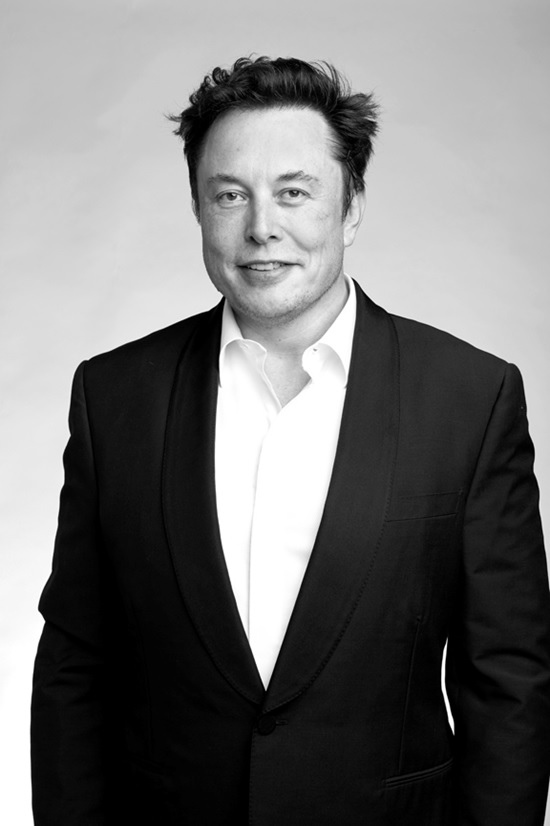
Source: Wikipedia
Apparently, Musk believes that merging humans with artificial intelligence is the inevitable solution to facing the existential threat that A.I. poses upon mankind. Musk has warned that “Even in a benign A.I. scenario, we will be left behind…but with a brain-machine interface, we can actually go along for the ride. And we can have the option of merging with A.I. This is extremely important.” In 2017, Musk launched Neuralink, a brain and computer interface venture, which seeks to fuse the human brain with artificial intelligence. The company has, until recently, kept most of its research out of the public eye. However, with trials successfully completed in monkeys, Musk was ready to reveal his creation at an event in San Francisco in July of 2019. Elon Musk announced that the brain-computer interface will begin human trials as soon as 2020. In his presentation, Musk noted the benefits of Neuralink, which include treating brain disorders, but revealed the true purpose for the venture when he stated, “This, I think, has a very good purpose, which is to cure important diseases, and, ultimately, to help secure humanity’s future as a civilization relative to A.I.” While taking a fatalistic approach to the inevitability of superior artificial intelligence, Musk concluded in an interview with Joe Rogan, that “It could be terrible, it could be great. It’s not clear. But one thing’s for sure, we won’t control it,” and added, “if you can’t beat it, join it.”
The perils of this paradoxical solution to the “Singularity” are abundant. Musk’s Neuralink offers a solution to save humanity, while the prospect of artificially augmented human brains arguably robs mankind of our humanity. Cognitive psychologist and philosopher, Susan Schneider, who is a Director of the A.I., Mind, and Society Group at the University of Connecticut, argues that, “merging with A.I. would be suicide for the human mind.” Schneider elaborated in an op-ed for The Financial Times, “The philosophical obstacles are as pressing as the technological ones,” and continued, “if they go as far as replacing normally functioning neural tissue, at some point they may end a person’s life…Would it be at 15% neural replacement? At 75%? Any choice seems arbitrary.” Schneider poses the most pressing “technoethical” questions to this “Singularity” dilemma. Once humans converge with artificial intelligence, where would we draw the line? How much of our own human reason and intellect would we, as a society, decide to retain? At what point will we no longer be “human”? Musk himself has argued that artificial intelligence could be used as a weapon and is only as good as the humans who wield it. How then, could we ever trust that convergence with A.I. would not end in the control of our minds?
Cryonics, Mind Uploading and Brain Prosthetics
Some within the transhumanist movement, such as Netcome, seek to replace our entire human brains with an artificial copy. The start-up company which was working in collaboration with MIT Media Lab professor of biological engineering and brain and cognitive sciences, Edward Boyden, received a substantial government grant from which MIT received approximately $300,000 to develop ways of preserving and analyzing the human brain. MIT later severed ties with the start-up company, following an MIT Technology Review article which outlined Netcome’s business strategy, stating, “Nectome is a preserve-your-brain-and-upload-it company. Its chemical solution can keep a brain intact for hundreds of years, maybe thousands, as a statue of frozen glass. The idea is that someday in the future scientists will scan your bricked brain and turn it into a computer simulation. That way, someone a lot like you, though not exactly you, will smell the flowers again in a data server somewhere…This story has a grisly twist, though. For Nectome’s procedure to work, it’s essential that the brain be fresh. The company says its plan is to connect people with terminal illnesses to a heart-lung machine in order to pump its mix of scientific embalming chemicals into the big carotid arteries in their necks while they are still alive (though under general anesthesia).” In other words, in order for clients to preserve their brains for future upload, they must first be euthanized. Netcome received more than $200,000 from terminally ill patients planning to undergo the assisted suicide procedure in hopes that someday their stored brains would be uploaded. MIT Media Lab fell under harsh scrutiny by the scientific community following public embarrassment of their research subcontracted by Netcome. Sten Linnarsson of the Karolinska Institute in Sweden stated, “Fundamentally, the company is based on a proposition that is just false. It is something that just can’t happen,” and added, “some people actually kill themselves to donate their brains.” Linnarsson continued, “It is so unethical—I can’t describe how unethical it is…That is just not something we do in medical research.”

On the contrary, cryonic brain and body preservation is not a new concept. Alcor Life Extension, which has been in operation since 1972, is currently preserving over 150 heads and bodies, including the remains of baseball Hall of Famer, Ted Williams. PayPal founder, Peter Thiel, and Google executive, Ray Kurzweil, have opted to undergo cryonic preservation, in the event of their deaths. Kurzweil has stated, “I believe we’ll have the technology for reanimation in 50 years. My best guess would be 40, but probably not more than 50. It is a scary prospect. My biggest concern is the loss of control – the possibility that the reanimation would be done prematurely. So you’d wake up but you’d really be in an impaired state, like locked-in syndrome. There’s a profound loss of control. I mean I have enough trouble looking after my interests when I’m alive and kicking. To look after your interests when you’re not only frozen in a vat of liquid nitrogen, but don’t even have legal status as a person…Alcor seems like a responsible organization, I think they would not reanimate people before it was going to work, but who knows who’s going to be in charge or in control 40 or 50 years from now? But there’s not really an argument against it, because the cryonics philosophy is that it’s not guaranteed to work. They acknowledge that there’s a good chance that it won’t work, but there’s a chance it’ll work, and it definitely won’t work if you don’t do it. My primary strategy for living through the 21st century and beyond is not to die. I think that’s more likely to work than cryonics, but they’re not mutually exclusive.” Kurzweil does present a good point worth pondering. If the possibility to reanimate cryonically preserved brains and bodies arises in the future, what guarantee will there be that the preserved remains will be “fit” for reanimation? Even cryonicists will admit that the preservation of a human brain without the slightest bit of damage is, to say the least, tricky. Within minutes after a person’s death, hippocampal neurons within the brain have already died. Professor of neuroscience at King’s College London, Clive Coen, argues, “Would you really want to wake up in 100 years’ time and be basically a cognitive vegetable and have your cancer fixed? These vulnerable people don’t realize they’re paying for something to be stored that is massively damaged.” Even the President and CEO of Alcor Life Extension, Max More, admits, “The idea of floating in a tank of liquid nitrogen unable to influence what happens to me is deeply unappealing. Even so, it is vastly preferable to ceasing to exist.” The risks of reanimation certainly haven’t thwarted some transhumanists from the concept of cryonics. Jeffrey Epstein, who had planned to impregnate as many women as possible, reportedly had interest in the cryonic preservation of his head and penis.
Looking beyond the scientific and technological boundaries of this pseudoscience for a moment, the philosophical questions of reanimation and mind uploading remain. Theoretically, it may be possible through cryonics, to preserve the neurons, synapses, and tissue that together form a human brain. However, the possibility of replicating thoughts, memories, and feelings from a preserved human brain does not exist even in theory. If it were possible, at some point in the future, to replicate a preserved human brain, the question still remains – would that replication be “you” or merely a simulation of you?
If your memories are what make you truly “you” then we are faced with yet another conundrum. MIT researchers, Steve Ramirez and Xu Liu, have recently discovered a way to successfully implant false memories in mice. Ramirez, who believes the same success, is achievable with humans, remarked, “Because the proof of principle is there…the only leap left between there and humans is just technological innovation.” Currently there are 20 labs worldwide which are seeking to build upon this endeavor. They justify the venture with the prospect of curing PTSD and depression, by replacing painful memories with pleasant ones. They claim there is even the prospect of curing Alzheimer’s by reverse engineering lost memories. However, the hazards of such a scientific advancement are obvious. Implanting false memories into the minds of human subjects could lead to every conceivable form of misuse from witness tampering, to the creation of unwitting mind-controlled spies. It seems that DARPA, the U.S. Department of Defense Advanced Research Projects Agency, has taken an interest in upgrading human memory, with human trials of a prosthetic memory neural implant. Over the past 5 years, the DOD has invested $77 million into restoring the memories of soldiers who have suffered from traumatic brain injury. The research has shown promising results with epileptic patients who already had electrodes implanted in their brains for unrelated studies. Further testing of a larger segment of the population, particularly using veterans as test subjects, is expected. The next steps include: building smaller implantable devices and seeking FDA approval to bring the product to market for the general public. Of course, there is a downside to this memory enhancing “brain prosthetic.” Users will have to undergo brain surgery in order to implant the device designed through DARPA and will rely on DARPA’s word that the brain prosthetic would never be put to use for nefarious purposes without their consent.
Biotechnology, Genetic Editing, and Synthetic Biology
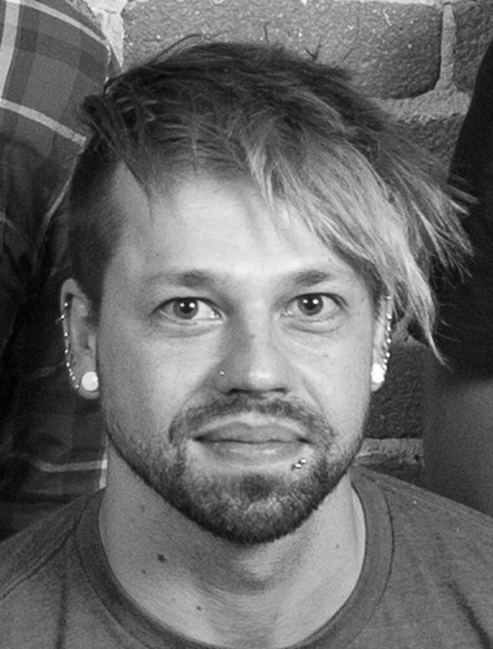
Source: Wikipedia
Rapid advancements in biotechnology may present the possibility for life-extension and expedited human evolution as well, but come with existential risks. The very same technology used to cure diseases, may also be used to create genetically engineered biological weapons of mass destruction. Innovations in bioengineering research was, up until recent years, relegated to a select few top laboratories, but with the shrinking costs of sequencing the human genome plus emerging technologies such as CRISPR/Cas-9, the field of bioengineering is growing and diversifying. Biohackers and amateur geneticists alike have the ability to perform DIY gene editing from their own make-shift laboratories. “There’s no doubt in my mind that somebody is going to end up hurt eventually,” remarked Josiah Zayner, a biohacker and CEO of The ODIN, a company which sells DIY CRISPR kits. Zayner, who is known for pushing the envelope of DIY genetic experimentation, recently injected DNA encoding for CRISPR into his arm before a live audience, in order to genetically enhance his muscle tissue. When asked about the stunt, Zayner later regretted it, stating, “Everybody is trying to one-up each other more and more. It’s just getting more and more dangerous.” However, when asked if Zayner would discontinue his sales of DIY CRISPR kits, he replied, “that should be made available just because if these tools aren’t made available, people will still make them somehow. Pushing it to the outskirts, pushing it underground, is going to push people to do ridiculous uninformed, things.” Recently, a team at the University of Alberta engineered a relative to the smallpox virus that was extinct, by stitching together fragments from mail-order DNA at the cost of about $100,000. The scientific community is sounding the alarm over DIY bioengineering, but little in the way of regulations has inhibited it. Lawmakers are struggling to catch up to the swiftly advancing technology. The National Human Genome Research Institute admits that, “the conversation about the science and ethics of genome editing has grown louder due to faster, cheaper, and more efficient technologies.” The Office of the Director of National Intelligence reports in the 2019 Worldwide Threat Assessment that, “rapid advances in biotechnology, including gene editing, synthetic biology, and neuroscience, are likely to present new economic, military, ethical, and regulatory challenges worldwide as governments struggle to keep pace. These technologies hold great promise for advances in precision medicine, agriculture, and manufacturing, but they also introduce risks, such as the potential for adversaries to develop novel biological warfare agents, threaten food security, and enhance or degrade human performance.”
While genetically engineering a powerful and highly contagious flu virus for the sake of researching ways to combat it may seem like a reasonable scientific endeavor, the release of such a virus, either accidentally or intentionally, could result in the death of millions globally. One such study on the H5N1 avian influenza strain took place in the Netherlands in 2011, sparking intense criticism from the scientific community as well as the government. In another study, researchers synthesized the poliovirus from scratch, entirely by following instructions of the written sequence. The prospect of bioterrorists and rogue laboratories replicating this research is alarming. Furthermore, little is known about the effects of unintended mutations in bioengineering. Researchers cannot even agree on the outcome of genetically modified mosquitoes which were released into the wild in Brazil from 2013 to 2015, with the intention of eradicating the native mosquito species which carried deadly diseases. In some instances it appears that the genetically modified mosquitoes, which crossbred with the native species, may have created an even more robust hybrid species of mosquitoes, capable of resisting pesticides and transmitting deadly diseases.
The potential for unintended mutations in bioengineering is not merely relegated to mosquitoes. Scientists share those same concerns with the troubling results of using CRISPR/Cas-9 on humans, for curing diseases such as AIDS. Although gene editing technology such as CRISPR/Cas-9 does offer potential for eradicating diseases, scientists admit the new technology yields mixed results regarding the emergence of unintended mutations. Two independent studies on CRISPR base editing reveal that the technology causes a large number of unpredictable genetic mutations in mice embryos and rice. Other studies have revealed that CRISPR/Cas-9 gene editing has caused off-target mutations as a result of snipping the DNA in an area which was never intended to be edited. Researchers have also identified an unintended consequence to gene editing by CRISPR/Cas-9. The human body has a natural response to protect the human genome, and, therefore, fights against genome edits made by CRISPR/Cas-9. The end result of the bodies’ response to CRISPR/Cas-9 may lead to cancerous tumors, as some studies show.
The troubling unintended mutations and potential for cancerous tumors caused by gene editing CRISPR technology have not stifled Bill Gates’ ambitious goals. In partnership with the National Institute of Health, the Gates Foundation intends to use CRISPR technology to bring HIV and Sickle Cell treatments to the United States and Sub-Saharan Africans for human trials in the next 7 to 10 years. In 2015, Bill Gates and others invested $120 million into a CRISPR/Cas-9 gene editing venture, Editas Medicine, headed by Gates’ former chief science and technology advisor, Boris Nikolic. Scientific advisor for Editas and leading Harvard geneticist, George Church, believes their research will enable scientists to use CRISPR to change the human genome so that humans will no longer be vulnerable to HIV.
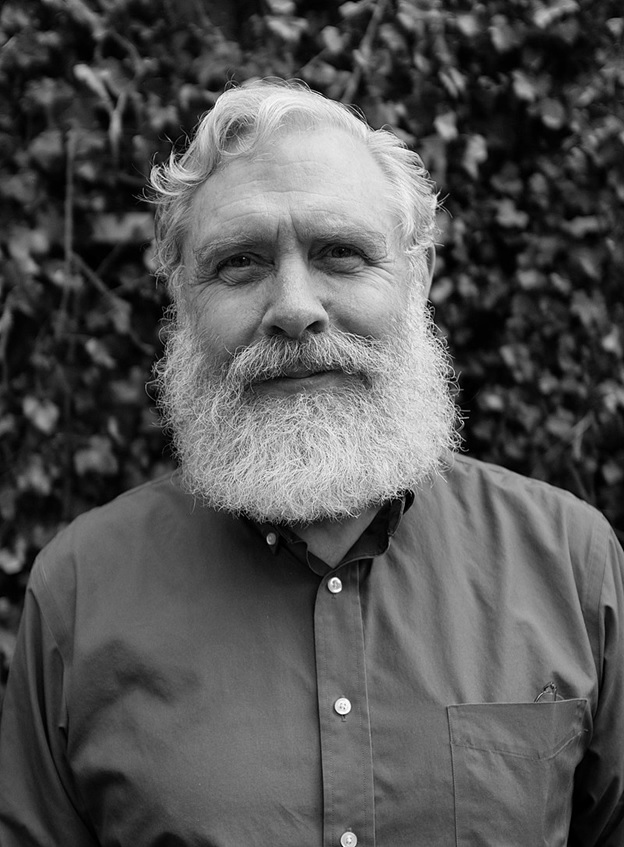
Source: Wikipedia
It appears that Jeffrey Epstein took an interest in some of the scientific endeavors of Bill Gates, Boris Nikolic, and George Church. Epstein and Gates met on several occasions to discuss a partnership in funding global health projects, and Epstein named Gates’ former advisor, Boris Nikolic, as the successor executor of his will. In a recent 60 Minutes interview, George Church admitted to meeting with Epstein, and publicly apologized for accepting donations from Jeffrey Epstein’s foundation, stating that it was “unfortunate” and “you don’t always know your donors as well as you would like.” Church added, “I regret not knowing more about the donor…So-called tainted money can be used for good… like, the tobacco money was used for good things.” Epstein’s interest in Gates’, Nikolic’s, and Church’s work is mysterious, but one thing is clear. Epstein did have an interest in engineering a genetically superior human race and he seemed to lure scientists with the promises of funding and the enticement of young girls who were always at his side. Epstein’s charities donated thousands to the Worldwide Transhumanist Association, which is now named Humanity +, and also paid the $100,000 salary of Humanity + vice chairman, Ben Goertzel. It appears Epstein was drawn to scientists who appealed to his transhumanist aspirations, like George Church, who has stated, “This is a whole new era where we’re moving beyond little edits on single genes to being able to write whatever we want throughout the genome.” George Church is leading a group of scientists, who met secretly in 2016, to work on the ambitious goal of creating a synthetic human genome from scratch. The group, which is referred to as Genome Project-write (GP-write), is making progress toward their goal. Their first steps will be to create a human cell that is resistant to viral infection, which will require approximately 400,000 changes to the human genome. This will be a milestone in their long term goal of synthesizing the entire human genome, which consists of 3 billion base pairs. Church, who isn’t backing down from the project’s lofty goals, sees endless potential for the emerging science of synthesizing and changing the human genome, stating, “Our goals aren’t finished yet…Hopefully they won’t be fixed in stone even at the finish line.”
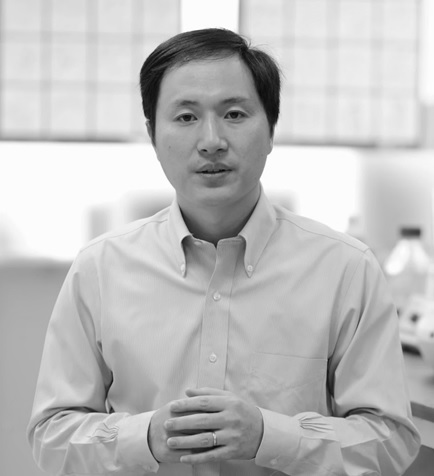
Credit: Wikimedia Commons
Considering the unintended mutations caused by CRISPR/Cas-9 gene editing treatments, the scientific community has called a moratorium on the genetic editing of viable human embryos, until the long-term effects can be understood. Testing the technology on human embryos which are brought to full term, would pass down any unintended genetic mutations from generation to generation, resulting in potentially devastating effects on the human gene pool. An international group of scientists from the United States National Academy of Sciences, the Institute of Medicine, the Chinese Academy of Sciences, and the Royal Society of London convened in Washington in 2015 to discuss the prohibition of human genome edits that could be inherited. Most, but not all, within the scientific community have generally adhered to this moratorium, with laws prohibiting germline editing for reproduction in over 40 countries. Unfortunately, there is no global enforcement of the ban. A Chinese researcher from Southern University of Science and Technology in Shenzhen, He Jiankui, defied this ethical standard and shocked the scientific community, when he announced in November of 2018, that he edited the genomes of two human embryos, which were brought to full term. He used CRISPR/Cas-9 gene editing technology to edit the genomes of the twin girls in order to make them less susceptible to HIV. It is unknown what, if any, unintended mutations may have occurred in the process. Chinese authorities claim to have ceased all of He’s research. However, some laboratories, including one in Saudi Arabia, have expressed an interest in continuing He’s work. Furthermore, a Russian scientist announced in June of 2019, that he intends to proceed with this research.
Aside from potentially disastrous mutations entering the worldwide human genepool through inheritable genetic modification, there are ethical dilemmas as well. As a pioneer in the field of bioengineering, George Church believes that there should not be a “hard line” between human germline editing for disease prevention and for enhancement. If so, then where do we draw the line? According to Church, “We stop, at a minimum, based on safety and efficacy – keeping in mind the long term. But it is a continuum and it needs to be regulated appropriately. There has to be a broad dialogue as to what the actual risks are for a particular thing, not blanket prohibition. What is the worst thing likely to happen if people made hair blond or cells resistant to viruses? And if that’s acceptable, then we should say so.” Even to the most novice observer, it is clear to see that Church drastically underestimates the worst-case-scenarios that bioengineering present. They are certainly nowhere in the realm of making people with blonde hair. However, the prospect of bioengineering for the purpose of human enhancement has undoubtedly manufactured a market for “designer babies,” allowing parents or even governments to dictate the genetic make-up of our future generations. This technology in the hands of eugenicist or genocidal world powers will become a temptation far too enticing to forego. Furthermore, it is not hard to imagine a world in the not-so-distant-future, where genetically modified humans and non-modified humans must live among one another, increasing the divide between the haves and the have-nots in a profound way. Both China and Russia have expressed interest in pursuing research in genetically modified “super soldiers,” which has created a dangerously irresponsible arms race within the field of bioengineering. Research in the area of life extension also presents the possibility for violations of privacy of the general population’s DNA. Google founders Sergey Brin and Larry Page have invested millions in their secretive venture, Calico, with the goal of DNA research for therapies aimed at “solving death”. In fact, Calico is the main partner of Ancestry, which controls a database of more than 5 million DNA samples. Though Ancestry’s Chief Privacy Officer, Eric Heath, claims that “We only want to do research totally on the up and up,” it is unlikely that Ancestry customers are aware that their DNA information is being used by Google’s Calico for profit and as John Simpson, a representative for Consumer Watchdog, stated, “[Google’s Calico] is very murky, and they are not very forthcoming about what they are doing.”
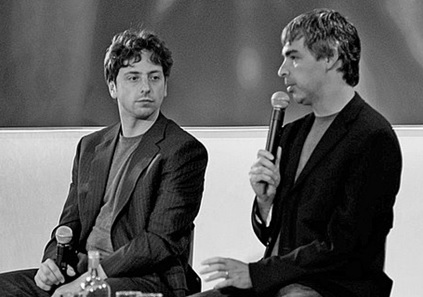
Source: Wikipedia
Playing God: The Spiritual and Religious Implications of Transhumanism
Transhumanism is merely a modern manifestation of the age-old pursuit of the “fountain of youth.” Throughout history, humans have mixed medical practices with occult practices in pursuit of eternal life. Many cultures and religions have partaken in gruesome blood drinking rituals, to receive strength, longevity, and vitality. Satanic blood drinking rituals in centuries past continue among cult members to this day, with their long-held belief that the ceremonies and the blood itself provide them with power. In ancient Greece, for example, blood was a magical elixir of life and spectators were known to drink the blood of fallen gladiators as a source of strength and vitality. In Greek mythology, ambrosia was the food or drink of the gods which made them immortal, and whoever consumed ambrosia would no longer have blood flowing through their veins, but a substance known as “ichor.”
It’s no wonder that transhumanist Silicon Valley elitists like Peter Thiel have taken a liking to the modern day version of young blood consumption, a term commonly referred to as parabiosis. Transfusions of young human plasma into older patients in hopes of slowing the ageing process, is a concept that start-up blood transfusion companies have sought to capitalize upon. One such company, whose name harkens to the Greek myth, Ambrosia, charges $8,000 per transfusion for willing “test subjects.” The business took a hit when the FDA cautioned against the pseudoscience, stating, “Our concerns regarding treatments using plasma from young donors are heightened by the fact that there is no compelling clinical evidence on its efficacy, nor is there information on appropriate dosing for treatment of the conditions for which these products are being advertised. Plasma is not FDA-recognized or approved to treat conditions such as normal aging or memory loss, or other diseases like Alzheimer’s or Parkinson’s disease. Moreover, reports we’re seeing indicate that the dosing of these infusions can involve administration of large volumes of plasma that can be associated with significant risks including infectious, allergic, respiratory and cardiovascular risks, among others.” However, some have carried on with the practice, believing that it is their modern day “fountain of youth.”
Without a doubt, the movement has taken on, not only a scientific, but also a religious tone. Though many transhumanists would identify as atheists, often times the lines between transhumanism and religion are blurred. The transhumanist pursuit of immortality is generally based on a belief that human existence ends upon death, and key figures within the transhumanist movement, like Zoltan Istvan, are proponents of transhumanist technology replacing faith in an afterlife. However, there are some within the transhumanist movement, who would define themselves as religious or spiritual transhumanists, and argue that the transhumanism seeks to achieve their spiritual beliefs of transcendence. Even some factions within Christianity and Mormonism have embraced transhumanism.
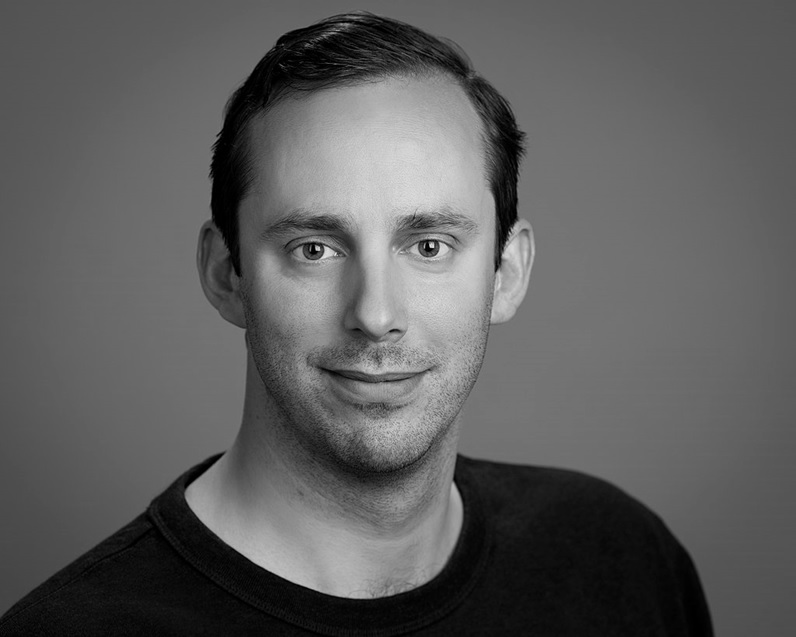
Source: Wikipedia
Furthermore, former Google engineer and co-founder of the self-driving car project known as Waymo, Anthony Levandowski, has started a new religion based on a soon-to-emerge superior artificial intelligence. Way of the Future is a religion which focuses on “the realization, acceptance, and worship of a godhead based on Artificial Intelligence (AI) developed through computer hardware and software.” Many Christians believe that the emergence of an artificial super intelligence will fulfill the prophesy in the Book of Revelations, which refers to the rise of a beast that will be worshiped as a god, and that humans who accept either brain chips or RFID chips in their hands may unwittingly take the mark of the beast.
Though the transhumanist movement is diverse, encompassing a broad spectrum of medical, scientific, and religious practices, there is one commonality. In pursuit of immortality, this cancer within modern science and medicine takes the old cliché of, “playing God,” to a whole new and alarming level.







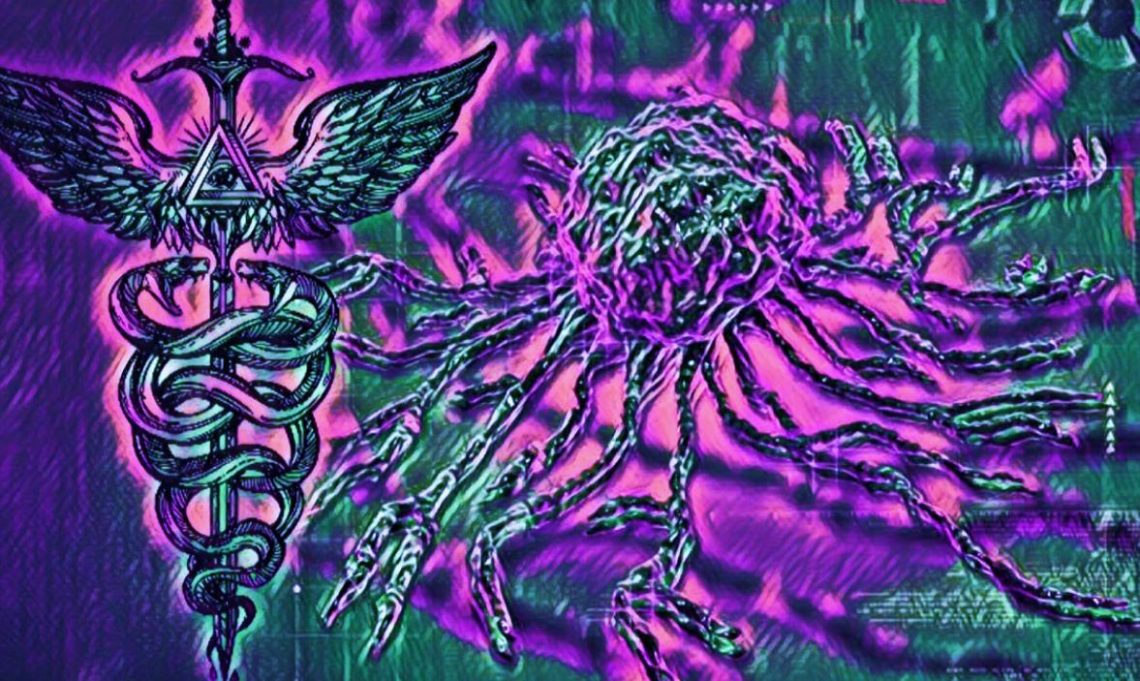




3 Comments
di
Might like to add some from TruthStream: http://truthstreammedia.com/?s=cancer
https://youtu.be/k9pvXmc5Yfc
Cypherpunk
Rest in peace Corey Lynn, the immortal transhumans will miss you
ellie
Thank YOU for your digging!
Interested in transhumanism?
Check out: https://www.youtube.com/watch?v=gNYIIlxAa8M